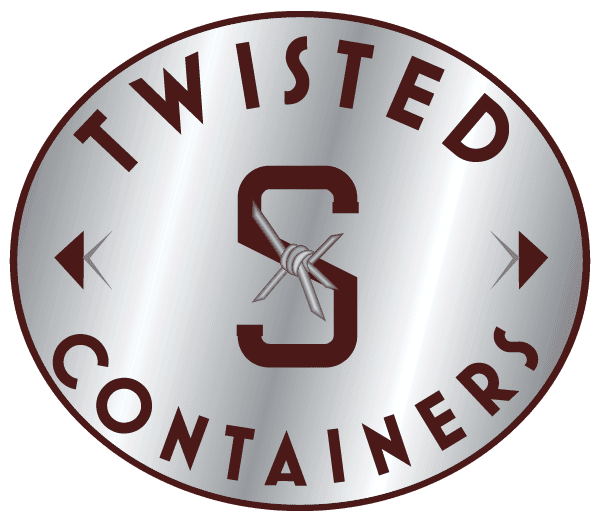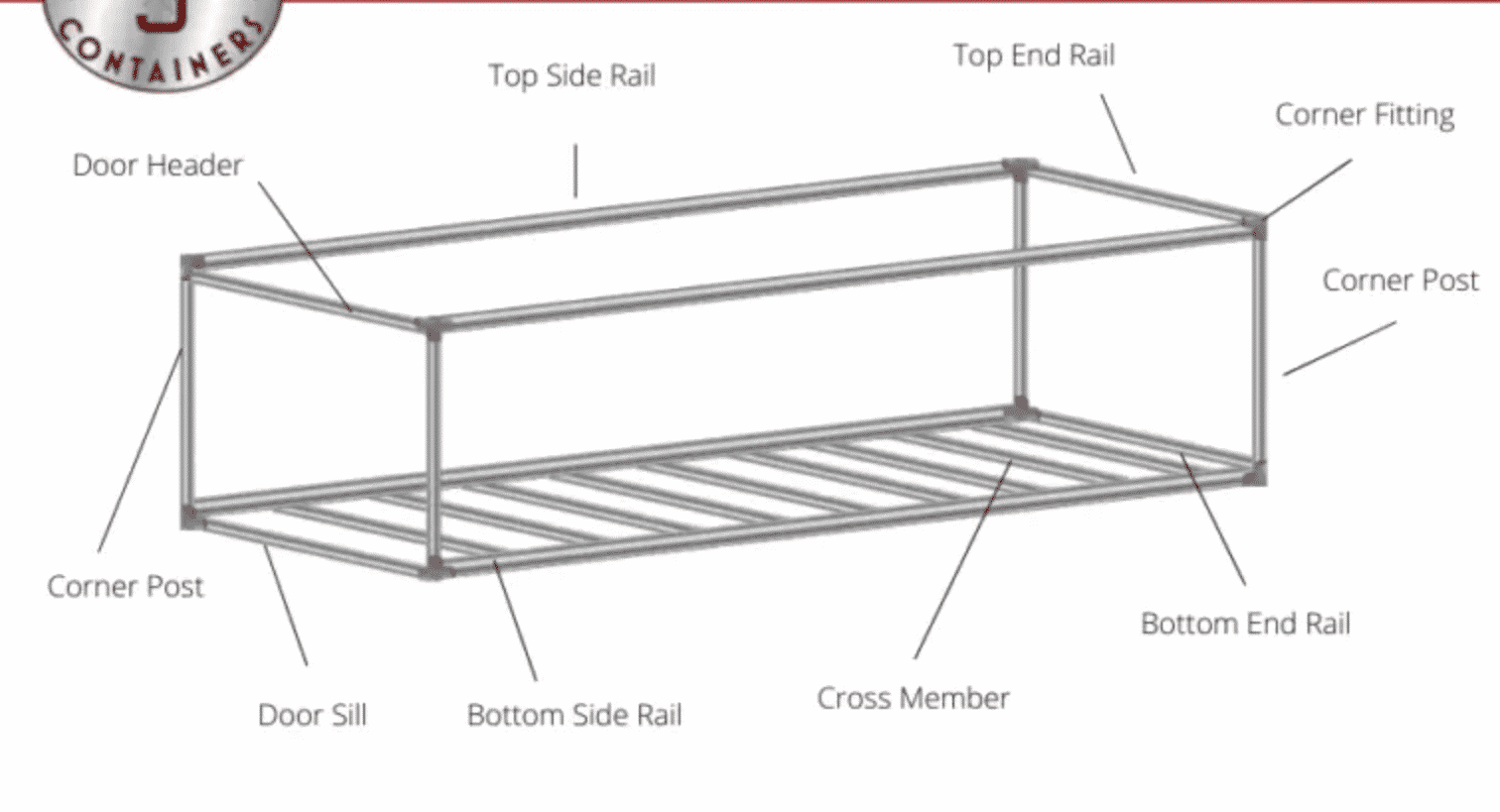The modern steel shipping container came into play over 60 years ago, and it helped revolutionize the way companies moved cargo around the world. Not only did they ensure that businesses could ship their goods safely, but they also allowed the companies shipping those goods to load and unload them quickly and efficiently. In addition, shipping containers helped bring standardization to the entire industry when it was needed. So, let’s explore what shipping containers are made of and just how they are built.
What Are the Components of a Shipping Container?
Because shipping containers are made to be stacked, they are entirely enclosed with two walls, a roof, and floor panels. As a result, they are what are known as “semi-submersible” containers. This means that they are airtight, waterproof, and water-resistant. In addition, both walls have doors on the top half, while the bottom portion comprises what is known as corner castings. These are what allow containers to be built on top of each other.
There are three main parts to a shipping container:
- First, exterior panels – These are what give shipping containers their box-like shape. The paneling is held in place by steel ribs that run vertically along the three sides of the containers.
- Interior flooring – The flooring of a shipping container is the majority of what the interior consists of. It’s made up of steel beams and bracing on both the top and bottom of the flooring to give it structure.
- Roof – Most of what makes up a shipping container roof is steel mesh covering what’s a “honeycomb.” These two components give shipping containers what’s “high cube storage,” meaning the roof height makes them valuable to shipping companies and allows them to store more in each container.
What Are Shipping Containers Made Of?
Typically, shipping containers must be weatherproof, durable, and strong enough to be stacked. Because of this, their frame and walls are manufactured from Corten steel.
Corten steel, which is sometimes referred to as ‘weathered steel,‘ is a group of steel alloys used to fabricate outside structures. It is designed to not only stand up to the elements but also be corrosion resistant.
How Are Shipping Containers Constructed?
You may be surprised to learn that shipping container manufacturing isn’t entirely by machine. Instead, much of the process includes manual labor by teams of skilled workers. This labor ensures that each steel shipping container consistently meets the standardized specifications required to be efficient.
The first step of the process is the fabrication of the container panels.
Large rolls of steel are unrolled and cut down into sheets 1.6 to 2mm thick. Each sheet is then sandblasted and primed to remove any dust or other contaminants. Once the steel is prepared, it is pressed into corrugated panels. This makes them stronger and gives them the familiar wavy appearance of modern shipping containers.
The next step is welding together the tubular steel frame of the container.
The floor frame assembly consists of two longer I-beams laid out perpendicular to each other. They have smaller I-beams welded between them to give more strength to the structure. Once the welding is complete, a flap disc angle grinder removes any rough welding joints.
With the walls and floor complete, the next step is adding the front and back doors of the container.
Just like the rest of the container, the doors are corrugated Corten steel. Once the steel has been cut into the proper shape, it is encased in square steel tubing before sanding. This is to remove any rough welding joints.
The doors and wall panels are then attached to the floor frame. The corner posts are lined up, and everything is welded together to ensure the proper amount of strength and waterproof everything. Reinforcing braces are for extra durability and to spread any impact evenly throughout the entire frame. Next, the roof is lifted into place by a crane and welded to the whole framework.
Once quality control is done, and a final sandblasting is done, a primer layer is sprayed onto the structure before being painted.
The primer will allow the additional layers of paint to stick more effectively to the corrugated metal. After the primer dries, multiple coats of paint are sprayed on. This helps to further protect the container from the harsh elements.
A layer of 28mm marine-grade pressure-treated plywood is then attached to the floor frame. The wood is treated with EPA-approved chemicals, including pesticides and anti-decomposing agents. This will ensure the safety and longevity of the floors. Six panels of this plywood are screwed directly into the steel floor beams.
The shipping containers are now ready for company decals and logos.
They will also require labels with several unique codes. This is a system used in order for people to identify the container from anywhere in the world.
Shipping Containers In OKC
If you are ready to purchase quality shipping containers, let Twisted S Containers help you. And if you have any questions, do not hesitate to contact us today. Our experts are always happy to assist with all your shipping container needs.
Read More: How to Buy a Shipping Container: 5 Step Beginner’s Guide, How to Finish the Inside of a Shipping Container: 8 Steps

